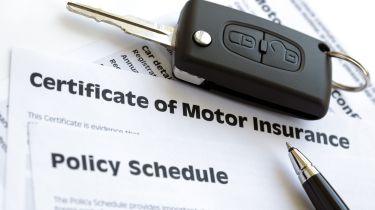Vehicle Risk Ratings: Understanding the Future of UK Car Insurance
Car insurance in the UK is undergoing a significant transformation with the rollout of Vehicle Risk Ratings (VRRs). This new system is designed to replace the long-standing car insurance group system. With the introduction of VRRs, insurers will have a more detailed method for assessing risk, offering drivers a clearer perspective on the safety and potential issues of different vehicles. Now that the new system has launched, it’s time to understand how your car insurance will be affected and which vehicles will be more or less expensive to insure.

How Vehicle Risk Ratings Work
Before learning about the new system, let’s review how the outgoing car insurance group system works. Since 2006, cars have been classified into groups ranging from one to 50, with group one cars being the most affordable to insure. Thatcham Research determines a car’s insurance group based on various factors, including cost, performance, safety tech, and repair expenses. Until recently, this data, combined with insurers’ historical knowledge of different car types, was sufficient to determine a customer’s premium.
According to Jonathan Hewett, CEO of Thatcham Research, “This is no longer viable in today’s fast-paced environment where it’s important to understand the influence of rapidly developing ADAS [advanced driver-assistance systems] on accident frequency and severity, the impact of new security technology in staying ahead of the criminal gangs and the challenges electrification and new vehicle structures present to sustainable repair.”
The new Vehicle Risk Rating system addresses these issues by offering a more detailed level of risk assessment, taking into account quickly evolving automotive technologies. The system is divided into five categories:
- Performance: Considers factors like acceleration, top speed, drivetrains, powertrains, and list price.
- Damageability: Assesses how a car’s materials and design affect repair severity and cost.
- Repairability: Examines how easily a car can be repaired, considering a “transparent and accessible repair strategy.”
- Safety: Evaluates both passive and active safety systems, as well as aspects like kerb weight.
- Security: Considers the use of physical and digital systems to prevent theft.
Each category assigns a Vehicle Risk Rating from one to 100, with a low score indicating low risk. For instance, a car with the latest active safety systems is likely to receive a low score in the Safety category, indicating lower risk for insurers. Conversely, a supercar will score highly in the performance category, as it presents a higher risk in this area. Insurers can use these five individual scores to customize insurance premiums for each new car. This allows for a more comprehensive range of factors than the old system.
Under the old system, a new car’s insurance group was fixed once it went on sale. The new Vehicle Risk Rating system adopts a dynamic approach, which means that scores might change based on software updates, changes to repair strategies, and theft data for each car.
Thatcham Research hopes that the new system will enable both customers and manufacturers to compare the strengths and weaknesses of different models. This will help customers make more informed purchasing decisions and encourage manufacturers to “prioritise insurability in their design and development of new technologies.”
When is the New System Being Introduced?
The Vehicle Risk Rating system was launched in September 2024, applying to all new cars sold in the UK from August 1st, 2024. There is currently a transition period of at least 18 months to allow insurers and other stakeholders to adapt to the new system. Insurers will use both the old insurance group system and the Vehicle Risk Rating to determine insurance costs until the end of the transition period. After this point, insurance for all new cars will be determined by their five Vehicle Risk Rating scores. The system will not be applied retroactively to older cars.
Will My Insurance Premium Increase?
It is hard to predict now whether insurance premiums will increase or decrease, because the VRR system is still in the transition phase, and premiums will vary from model to model. However, it is possible that some models that are in high insurance groups currently could receive a low VRR score, and vice-versa, as the new system uses more data. Once the new system is fully implemented, the five individual VRR scores will enable car buyers to understand why insuring a particular model is more expensive than another, which is something that the current insurance group system doesn’t provide.
However, Thatcham Research has clarified that buyers should not directly compare old insurance group numbers with the new VRR scores when shopping for a new car, as they are two separate systems.


